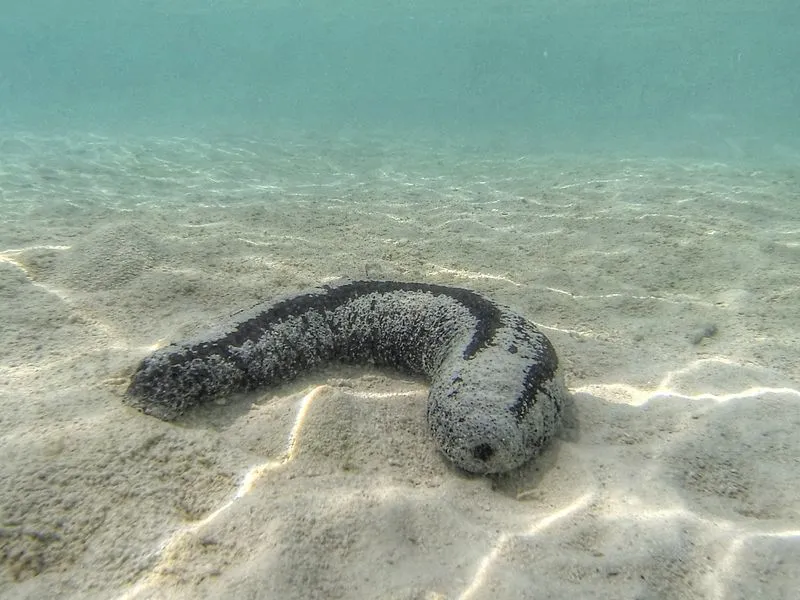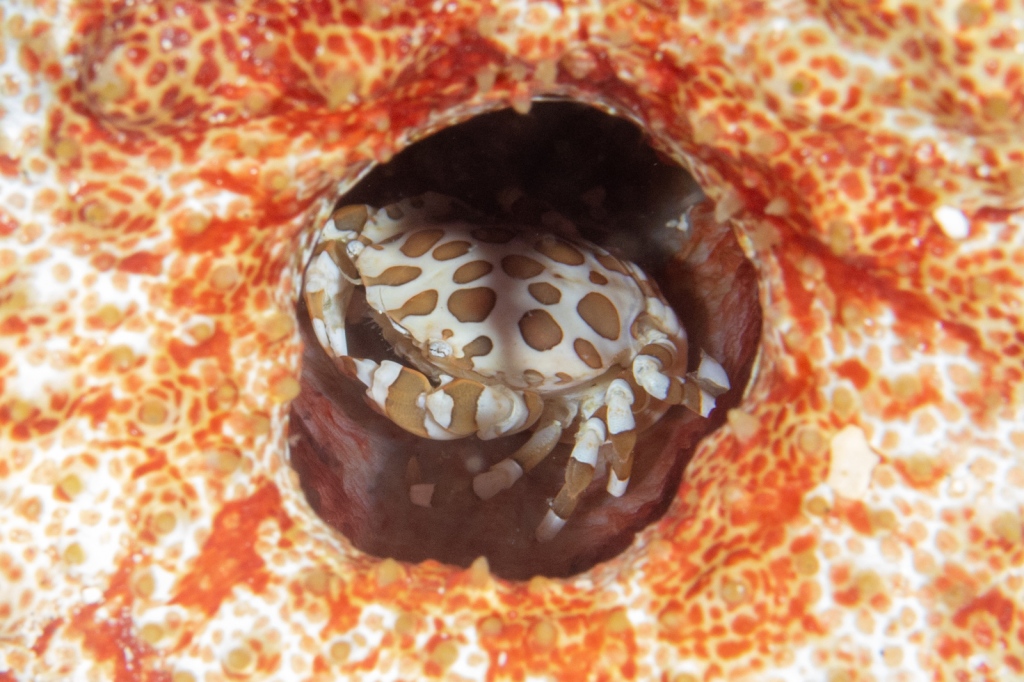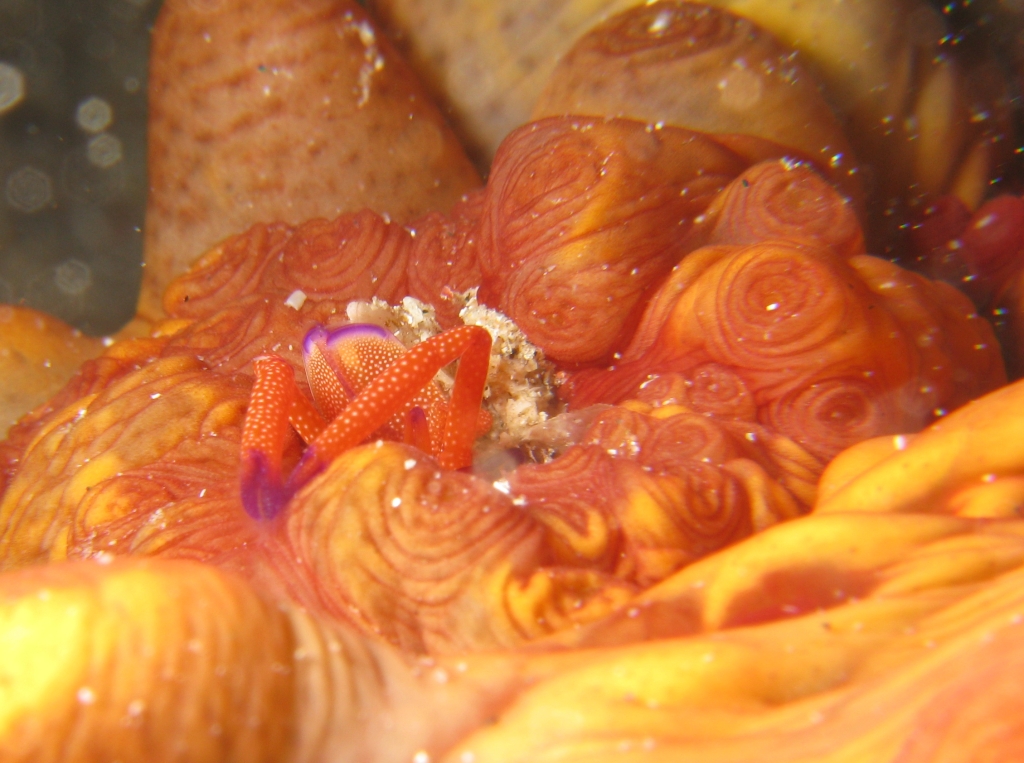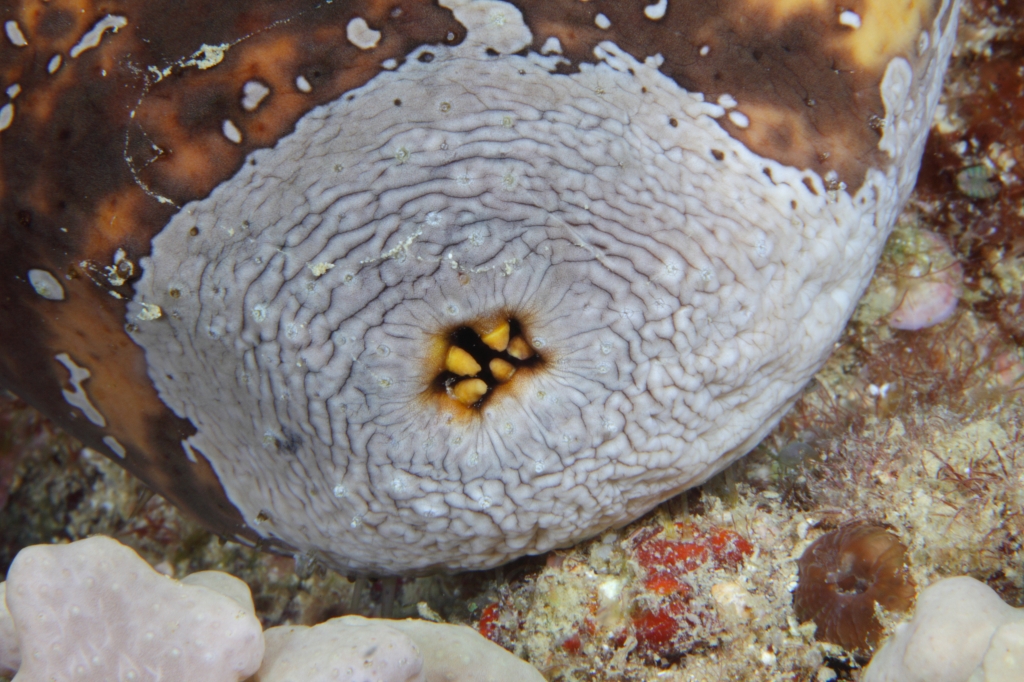What animal has no face, is named after fresh produce, resembles a flaccid turd, and can turn their bodies inside out when threatened?
Well, if you guessed sea cucumbers (Class: Holothuroidea) you must be a fellow aficionado or… perhaps the title was a dead giveaway. Either way, these squishy marine invertebrates are unsung heroes of ocean ecosystems and deserve to have a day in the spotlight!
Now, you may be looking at this picture and thinking, “Unsung hero?! But you literally just said they resemble flaccid turds.”
Yes. Yes, I did. But, being charismatic is not a prerequisite for contributing to ecosystem health. I would argue that their lack of charisma only adds to the fascination I have for these creatures.
If salacious gossip magazines have taught me anything, it is that symmetry is beautiful, and sea cucumbers have pentaradial symmetry, meaning their bodies have not just two identical sides (like humans), but FIVE identical parts around a central axis [1].
“But, again the flaccid turd resemblance, what does that have to do with symmetry (much less beauty)?”
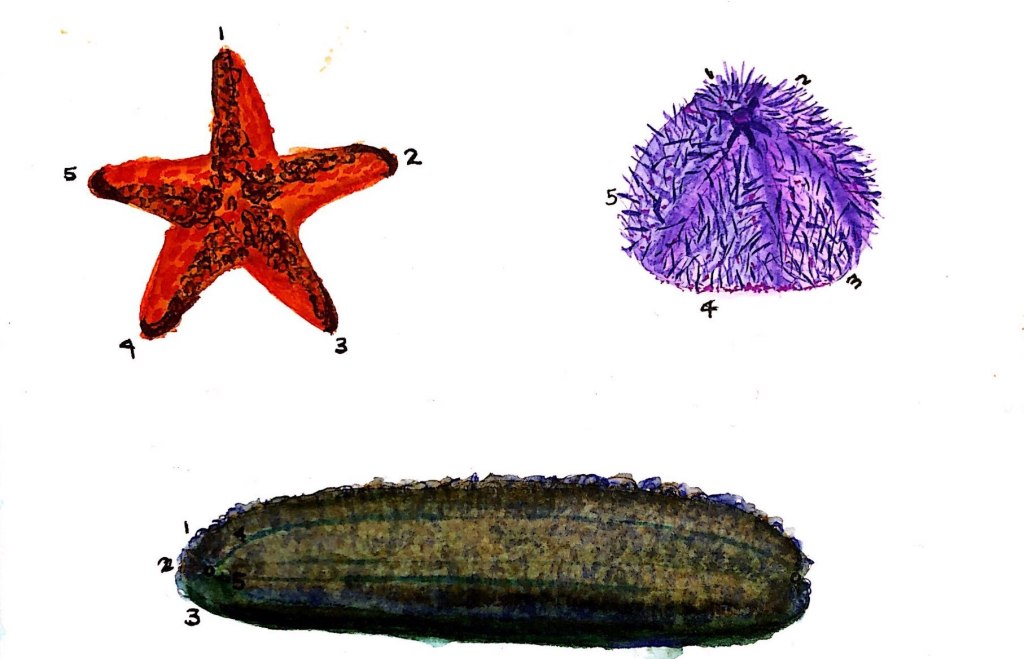
Well, let me digress up the taxonomic ranks to the phylum Echinoderm (meaning ‘spiny skin’ in Latin). A unique feature of all echinoderms (e.g. sea stars, brittle stars, sea urchins, sand dollars, and sea cucumbers) is their star-like body plan including pentaradial symmetry [1]. This set-up is very clear in sea and brittle stars. If we fold each sea star arm upward to meet each other, we get the 5-point symmetrical ocean pin-cushion set-up of a sea urchin. Sea cucumbers, then, are just those 5 star-like arms pulled straight up to meet each other, creating a cylinder of 5 symmetrical parts that “radiate” out from one central axis [1]. However, unlike their Echinoderm relatives, sea cucumbers also have bilateral symmetry (like humans). Having fully functional tube feet (which are flexible, hollow appendages that help echinoderms move and grab onto things) on the top of the cylinder isn’t super useful for locomotion, so sea cucumbers have a bivium, which is the top part of the sea cucumber where tube feet are either under-developed or used as sensory organs in some of the more “fancy” cucumber species (such as Pseudocolochirus, see below). Underneath, they have a trivium, which is the bottom part of the sea cucumber and where tube feet used for movement are located giving them bilateral symmetry [1]. Nature is beautiful, isn’t it?!
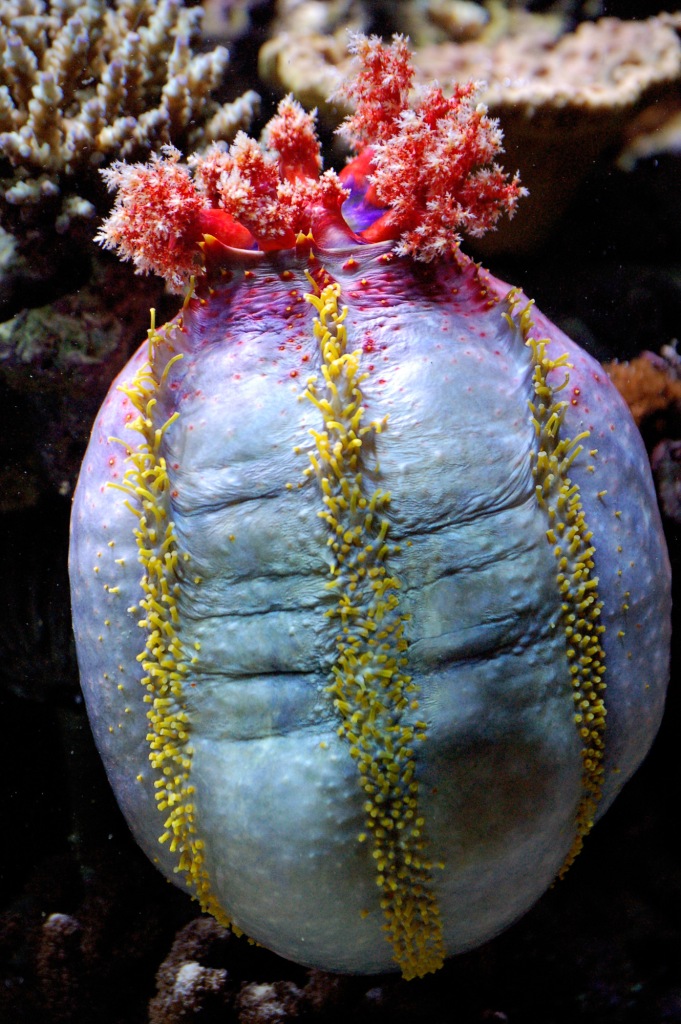
“Suuure…”
Okay, fine. Not sold on symmetry. Well then, since looks really aren’t everything, sea cucumbers have some unique features and behaviors to help them navigate their underwater world and contribute to the health of seagrass beds, coral reefs, and even the deep-sea floor [2]. While sea cucumbers don’t have eyes or even a brain, they do have a system of nerve strings (5 symmetrical ones to be exact) that allow them to perceive light, touch, chemical changes, and coordinate their movement and feeding [1]. Sea cucumbers are essentially a mobile digestive system. They coordinate their hundreds of tube feet to scoot themselves across the sand while their retractable mouth of flowery or feathery-like tentacles (which are actually just specialized tube feet, see above picture) mindlessly munches through the sand in search of delicious detritus (i.e. bits of organic material and waste) [1, 3]. However, even mobile digestive systems need to breathe. Have you ever been enjoying whatever yummy confection is in your mouth so much that somewhere between chewing, swallowing, and breathing things get mixed up and you choke a bit on that tasty snack, unable to breathe?
“Perhaps you should consider slowing down on your eating habits…”
This is not about my gluttonous tendencies; this is about the fact that sea cucumbers don’t have to worry about this ever happening because they breathe through their butts! Their sphincter muscle draws water in through the anus and over the sea cucumber’s tree-like “water lungs” that absorb oxygen molecules from the water [1]. Gathering life-giving oxygen isn’t their only useful butt feature; remember our riddle at the beginning of this piece?
“Flaccid turds, we know.”
No, not that descriptor.
“…turn their bodies inside out when threatened?”
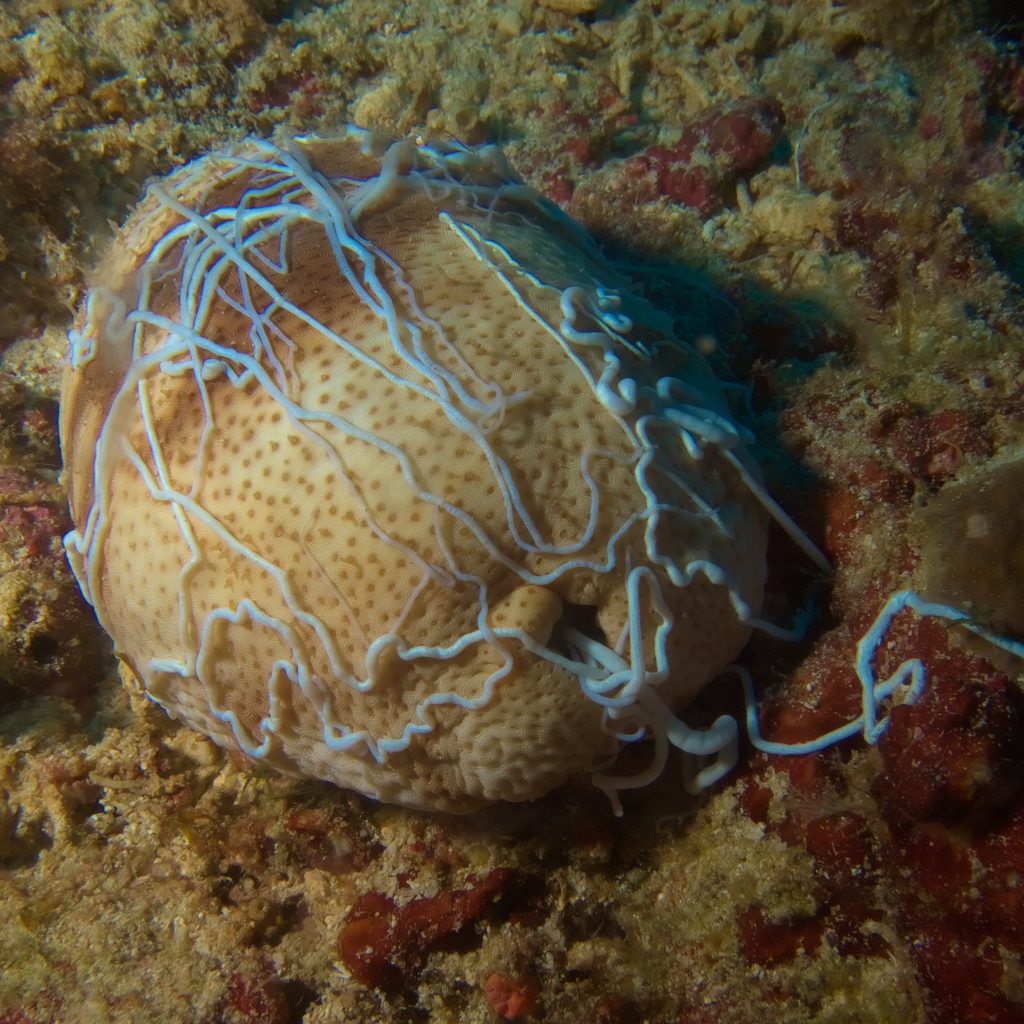
Yes! While this is a slight exaggeration, some species of sea cucumbers will jettison their internal organs out of their anus as a self-defense strategy against predators. While this may seem a tad dramatic and definitely detrimental, sea cucumbers, like their sea star relatives, are able to regenerate any organs lost in this butt battle [4]. A bit crude perhaps, but considering they have no spines or brain, the element of surprise for deterring predators isn’t the worst strategy. When the shock factor isn’t enough, some species of sea cucumbers may also expel parts of their “respiratory trees” in the form of sticky white strings (called Cuvierian tubules) that come with holothurin toxin that entangles and sometimes kills predators by rupturing their blood cells [5]. Not all sea cucumber species go for the bizarre, dramatic defense strategy; some go for the underground, camouflage route burying themselves in the sand [3]. Some sea cucumbers have adapted more specific defenses to deal with smaller, sometimes intrusive hind-end visitors of the sea cucumber.
“Please tell us this defense doesn’t have to do with their butts…”
No such luck, my marine invertebrate enthusiasts. Many sea cucumbers have commensal symbiosis with shrimp, crabs, and pearlfish, where these little critters will use the sea cucumber to benefit their own survival, but it doesn’t really help or hinder the sea cucumber [3]. This biological interaction is the middle ground between mutual symbiosis (where both species benefit from each other) and parasitism symbiosis (where one species is harmed and the other species benefits). Sea cucumbers are commensal hosts to these tiny critters who reside (you guessed it) in the sea cucumber’s anus as a form of shelter and a source of food [3]. Normally, the critter’s presence has no effect on the sea cucumber’s survival; however, some hind-end residents can become greedy. Sea cucumbers in the genus Actinopyga must deal with commensal neighbors gone awry. Some pearl fish will eat the gonads of sea cucumbers, which is not only highly unpleasant, but also reduces the sea cucumbers ability to reproduce. Sea cucumbers in the genus Actinopyga have developed teeth inside their anus to protect themselves from greedy hind-entrance visitors [1].
Left and center: Here are a few of the crustacean tenants that have commensal symbiosis with sea cucumbers, taking refuge inside their posteriors [Sources: Flickr]. Right: Some sea cucumbers have anal teeth as a fence for unwanted tenants (Notice the pentaradial symmetry!) [Source: Klaus Stiefel, Flickr]
“So aside from a portfolio of butt adaptations, why are sea cucumbers unsung heroes?”
Ah, yes, the pièce de résistance! These uncharismatic, sand-vacuuming, butt-battling sea cylinders are responsible for keeping their local marine systems clean and tidy! They are the (cooler) marine version of earthworms. Using their specialized tube feet mouth tentacles, they shovel any organic matter (e.g. algae, plankton, and detritus) along with sand found on the seafloor into their mouths. This process converts organic matter into recyclable nutrients that go back into the food web and ejects out cleaned sand and sediment [6]. By stirring up and munching through sediments, these ocean vacuum cleaners regulate oxygen conditions on the ocean floor. In fact, in areas where sea cucumbers were experimentally removed, oxygen decreased by 63% [7]. The sea cucumber’s bioturbation (the mixing and stirring of sediment by organisms) is important for many biological and ecological processes within the water column including biodiversity as well as nutrient and oxygen cycling [3, 6]. Sea cucumber digestion is also responsible for pooping out dissolved calcium carbonate that is needed for coral growth and protects against ocean acidification [3].
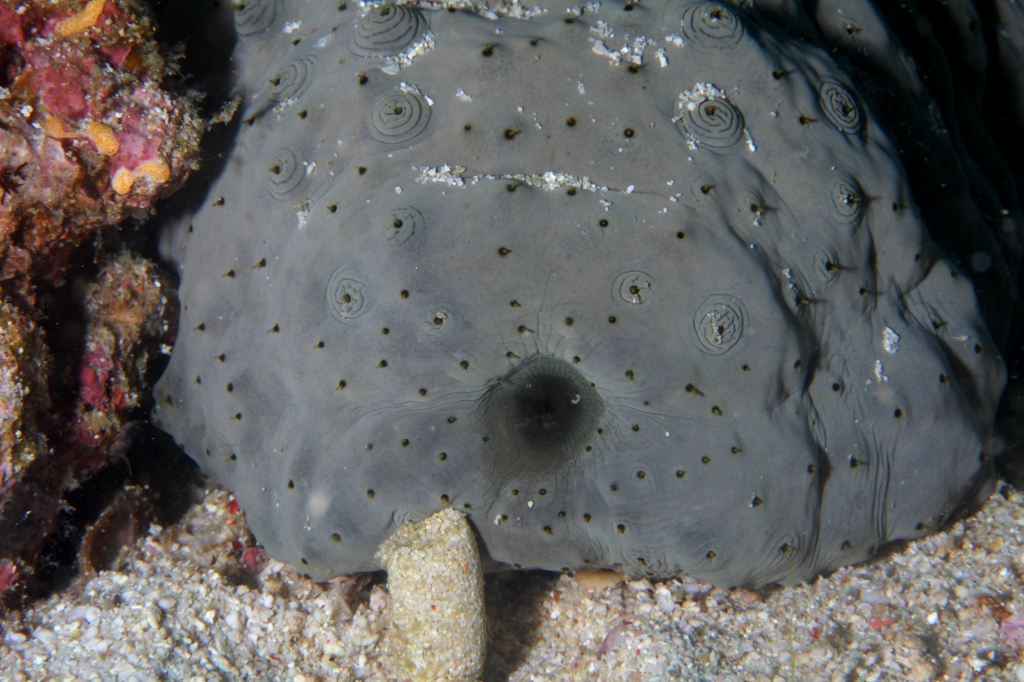
Sea cucumbers don’t digest most sand, but they do clean it, which means that the beach sand you lay on in the summer may have been sea cucumber poop at one point or another [Source: Klaus Stiefel, Flickr] 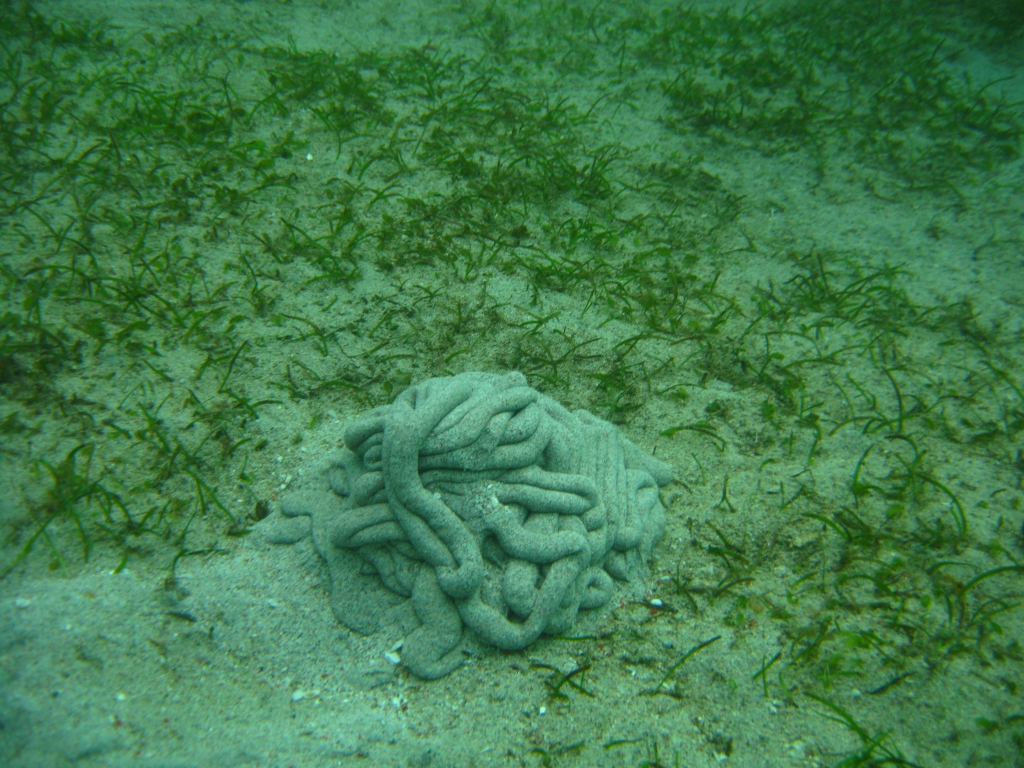
Talk about the cleaned turd pile ever! [Source: Paulo O., Flickr]
So, no brains and lots of butt adaptations aside, these odd marine invertebrates play crucial roles in the health of our oceans. While I maintain that they look like flaccid turds, they deserve reverence and respect for their ocean-cleaning capabilities and predator defying-strategies. Being a sea cucumber is a dirty job, but someone’s gotta do it, so they might as well go all-in and be uniquely bizarre and fascinating!
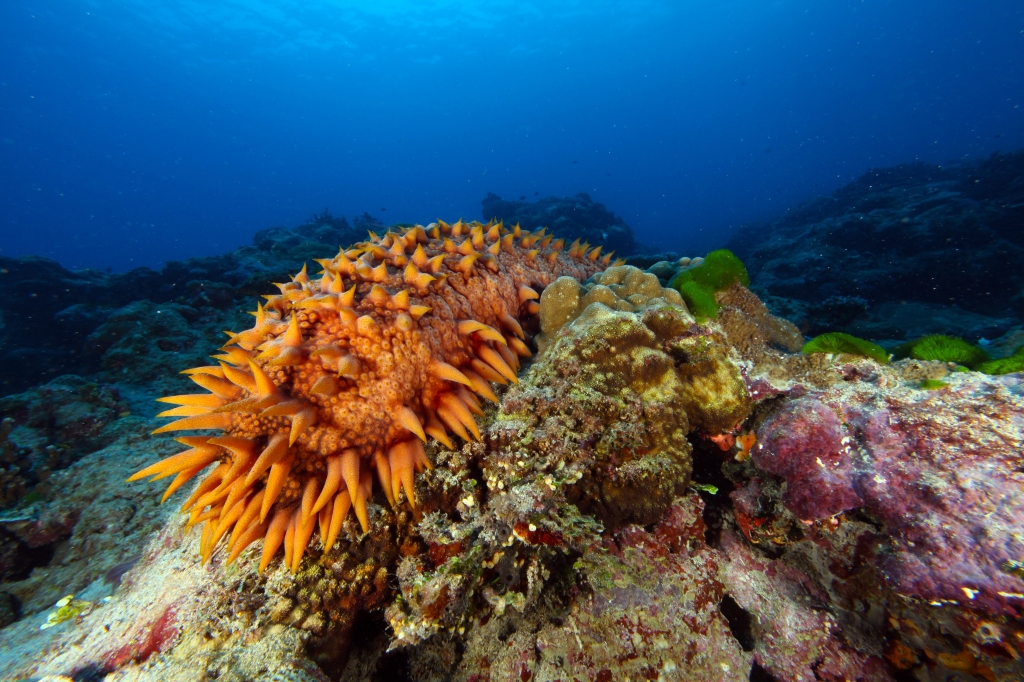
References:
[1] Hoover, J.P. (1999). Hawai`i’s Sea Creatures: A Guide to Hawai`i’s marine invertebrates (p. 290, 323-324). Mutual Publishing, Honolulu, HI.
[2] Purcell, S. W., Hair, C. A., & Mills, D. J. (2012). Sea cucumber culture, farming and sea ranching in the tropics: Progress, problems and opportunities. Aquaculture, 368, 68-81.
[3] Purcell, S., Conrad, C., Uthicke, S., & Byrne, M. (2016). Ecological roles of exploited sea cucumbers. Oceanography and Marine Biology, 54, 367-386. DOI: 10.1201/9781315368597-8
[4] Kropp, R.K. (1982). Responses of five holothurian species to attacks by a predatory gastropod, Tonna perdix. Pacific Science, 36, 445– 452.
[5] Hamel, J.F. & Mercier, A. (2000). Cuvierian tubules in tropical holothurians: usefulness and efficiency as a defense mechanism. Marine and Freshwater Behaviour and Physiology, 33, 115–139.
[6] Uthicke, S. (1999). Sediment bioturbation and impact of feeding activity of Holothuria (Halodeima) atra and Stichopus chloronotus, two sediment feeding holothurians, at Lizard Island, Great Barrier Reef. Bulletin of Marine Science, 64(1), 129-141.
[7] Lee S., Ford, A.K., Mangubhai, S., Wild, C., & Ferse, S.C.A. (2018). Effects of sandfish (Holothuria scabra) removal on shallow-water sediments in Fiji. PeerJ, 6:e4773.
Karli Chudeau (@KarliRChudeau) is a graduate student in the Animal Behavior Graduate Group and a part of the UC Davis Coastal Marine Sciences Institute. She is interested in conservation management and assessing animal welfare in wildlife rehabilitation settings. Her current research examines how we can use behavioral management interventions, such as environmental enrichment, to improve reintroduction success with pinnipeds. She is also an avid ocean nerd.
[Edited by: Meredith Lutz]
